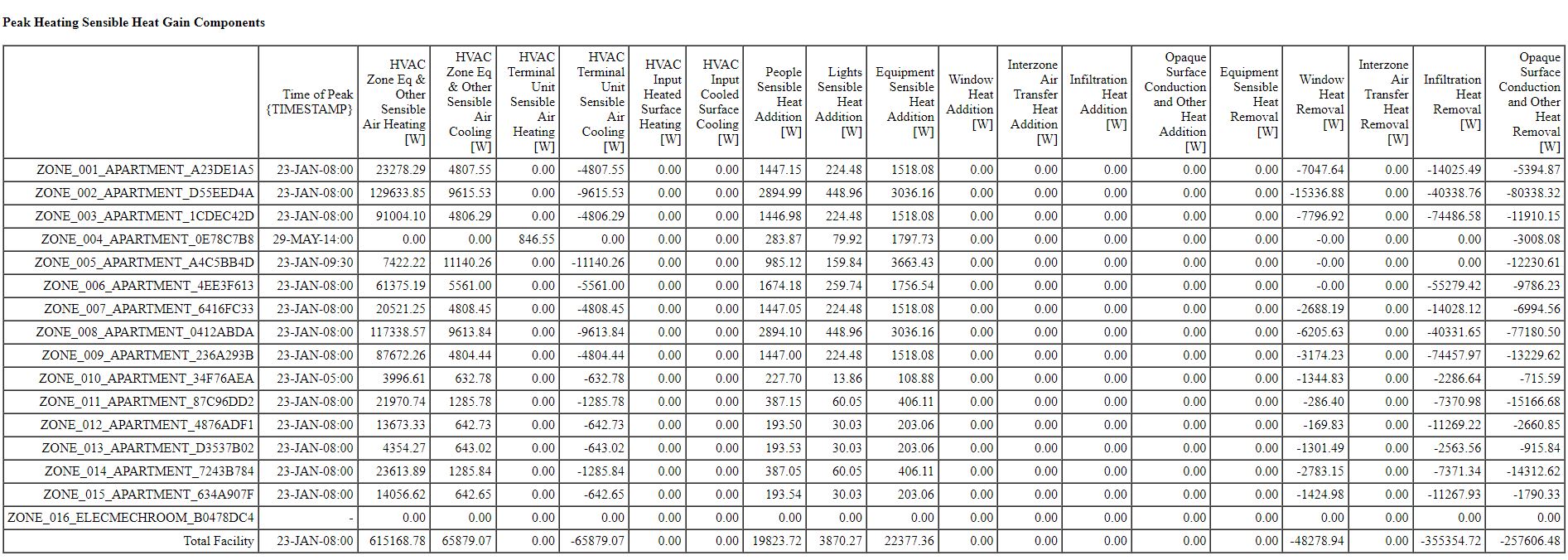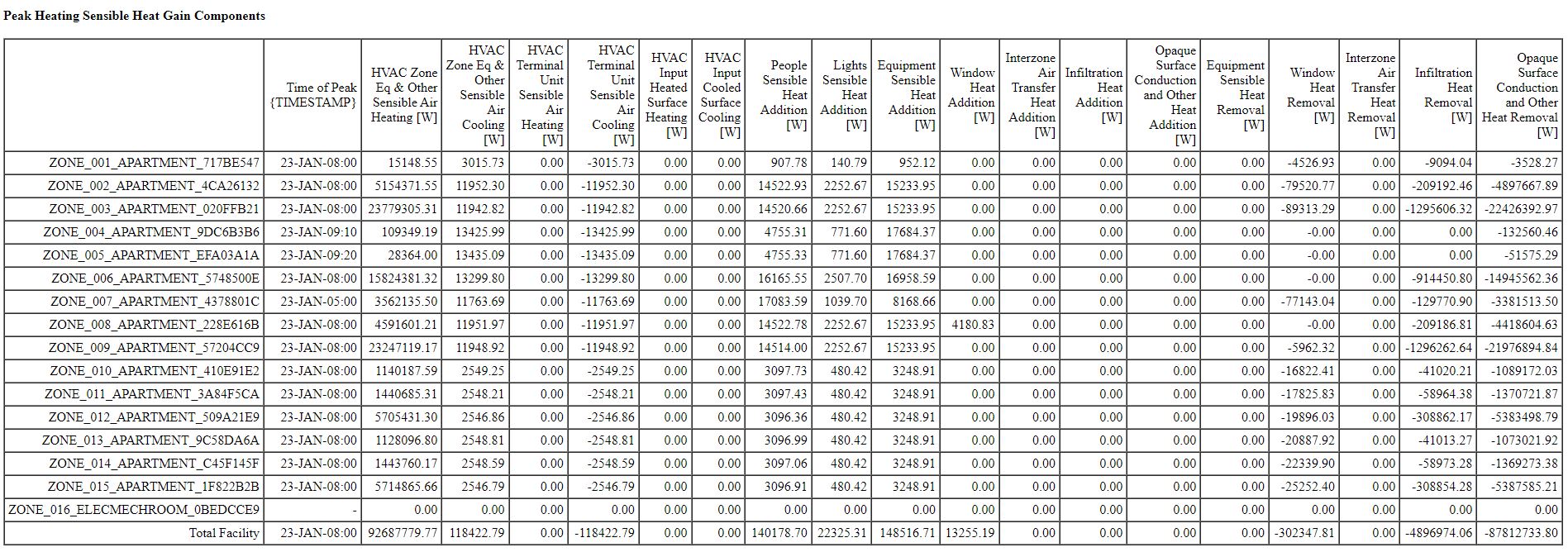I am running a large parametric simulation of different ECMs using Openstudio/Energy Plus (using Ironbug/Honeybee in Grasshopper to generate and run the files).
I am using the same HVAC system and internal loads on two buildings, a 4 story low rise and a 18 story high rise, using zone multipliers so I still have the same number of zones between the two buildings despite the difference in floor area and height.
Looking at the Peak Heating Sensible Heat Gain Components, the peak heating for the entire facility of the high rise is much higher than the low rise (driven mostly by window heat loss and infiltration), which is expected. But normalizing for the floor area, the high rise's peak heating load is like 20x higher.
Low Rise

High Rise

When I look at the autosizing for the boiler, the normalized capacity between the two is pretty comparable, with the high rise actually doing better. There were no unmet heating hours in either building.

I am a little perplexed... trying to demonstrate the impact of the ECMs on the peak heating and cooling loads but not sure the high rise peak sensible heat gain components seem reasonable in the high rise case as illustrated. Any insights or ideas would be greatly appreciated.





